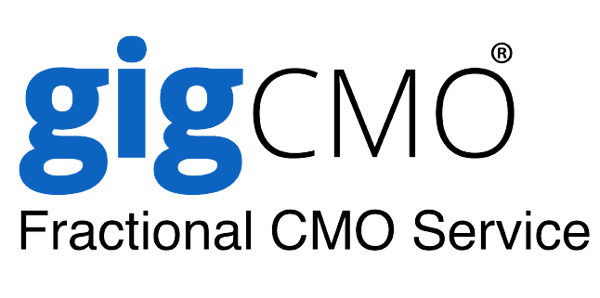
Rumour has it that more than half of companies are planning to cut marketing jobs over the next three months in response to the financial impact of Covid-19. If that’s the case in your business, the chances are you weren’t using your marketing team effectively in the first place, but a little help from a Fractional Chief Marketing Officer or an interim CMO might help get you on track.
The days of seeing marketing as a cost to be axed when times are hard have gone. The approach is now one that shows signs of ageing in a company that are more likely to sink them in the long-term than help them swim. So, if there’s a wrong way to use your marketing team, then what’s the right way?
What is modern marketing?
Over the years, the role of marketing has changed, which has also led to no small amount of confusion as to its value when it comes to a company’s growth and success. It has now arguably come into its own in a bigger way than ever, and just in time to help companies look towards the post-lockdown road to recovery. The difference isn’t in the tools and talents that are available, but how they’re used.
A report by McKinsey recently highlighted the need for marketing departments to be “rewired for speed, collaboration, and customer focus”. They saw improvements in not what, but how marketing is done “unlock 5 to 15 percent of additional growth and trim 10 to 30 percent of marketing costs” in successful cases.

What they’re really talking about is being more strategic and more integrated in your approach – not seeing marketing as an isolated entity, but one that needs to be connected to all other areas of the organisation in order to feed back into them. In other words: “CMOs can’t deliver marketing-led growth to the company on their own. Cross-functional collaboration is essential.”
Essentially, everything is driven by data and insights. That in itself isn’t all that new, but the level of detail and understanding that we can go to has become significantly more sophisticated and there’s some very clever people out there, both full and part time marketing on demand, who know how to read it and then translate it into actions.
That information is now all-encompassing, and crucially, it’s in real time too. That means where historically data analytics looked backwards to unearth insights about past behaviour and measure the effectiveness of current campaigns, now we can use it to anticipate unmet consumer needs, identify opportunities we didn’t know existed, and reveal subtle and addressable customer pain points.
What does reorganisation look like?
Reorganisation falls into two categories: it’s in the organisation of the talent and tools that you employ, but also in the overarching management and company culture.
In terms of organisation of talent and tools, the key pitfall that McKinsey identified in its research was that CEOs are more often than not open to change and innovation but tend to want to dip a toe in and start with one or two ‘bits’. That usually means (as is human nature) the bits they’re most interested in or best understand. They then become disillusioned with a lack of progress, which in turn leads to a lack of further change.
The problem is that modern marketing is really about a system-wide approach. That means monitoring everything and using the insights to meet customer needs. Without a full-suite approach, there tend to be blind spots, which ultimately leads to a loss of value.
For example, the strategy used to be informed by limited insights and lagging data, whereas now it can be informed by real-time insights that are integrated into operations. Content might once have been periodic and intuition-driven, whereas now it is always on and driven by analytics and data, dynamically curated and augmented by AI tools. Customer experience might once have meant several broad offerings across large customer segments, whereas now it means an experience that’s data-driven and personalised, leveraging unified customer data across all interactions for purposeful communications.
It’s this combination of information and creativity that is so powerful. As McKinsey found, “companies able to successfully integrate data and creativity grow their revenues at twice the average rate of S&P 500 companies.”

In short; you’ve got to be all in. But while that might not mean cutting your marketing department, it also doesn’t have to mean doubling it either. There’s a wealth of marketing talent on demand out there that you can tap into for anything you don’t have in-house.
Why company culture matters
What’s that everyone’s been saying? We’re all in it together? Well when it comes to marketing, it’s actually true – or at least it should be. Company culture has shifted across the decades. We have gone from being outright aggressively competitive with our colleagues in a power suit way, to the seemingly less threatening, sneaker wearing kinda way.
What’s really important however, is collaboration, accountability and autonomy. Once you have an all-singing, all-dancing 24-hour, 360-degree data and insight driven approach to marketing, you need everyone to be on board and working towards the same goals.
It’s also important to foster a company culture that values ROI and does that through the constant testing of strategies to see if they’re working. Importantly, it means that teams mustn’t be afraid to say something isn’t working, and to change to a different approach for fear of seeing it as a personal failure. It’s this type of agility that has meant that “even the most digitally savvy marketing organisations have experienced revenue uplift of 20 to 40 percent by shifting” their approach.
Two ways of creating that kind of culture is to define processes for testing and reviewing strategies – such as A/B testing on digital campaigns for example. Equally, giving teams the responsibility for spending their budgets and encouraging them to treat it as if it were their own money.
In essence, to make the most of your marketing team, it needs to be positioned and thought of as not so much a single entity, but the lifeblood that runs through all the veins bringing the right bits to the right parts of the body. It also needs to be considered as something that works for everyone internally and not just as a client-facing function.
The lifejacket you’ve already got – it just needs a new whistle
So, when you hear CMOs and marketing consultants talk about optimising marketing departments as part of the recovery effort, it actually isn’t just an effort to protect their own skins. Today, more than ever, marketing is the link between everything you do in your business and the outside world – you just need to give it the tools and the talent to do what it does best.
Or, in the words of one former packaged goods CFO: “Cuts to marketing will look OK in year one, but by year three, when you’ve starved spending on brand, consumer research, and product innovation, the pipeline will dry up, and you’ll have a problem.”
Want to use your marketing team more effectively but not sure where to start? gigCMO’s Fractional Chief Marketing Officers are here to help. Let's talk!
Written by Mark Magnacca



